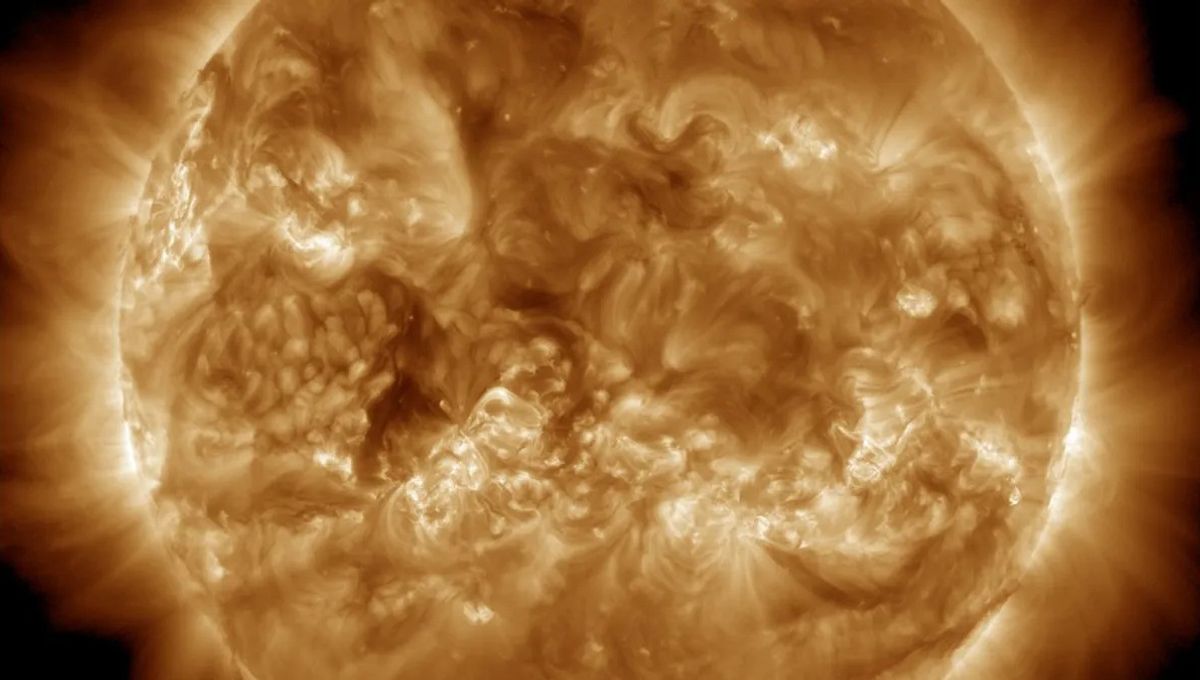
Though it might not seem like it on a cold day in winter, the Earth is actually technically inside the atmosphere of the Sun. But evidence outlined in a recent paper suggests it hasn’t always been, and may leave its protection again.
The Sun, being the perfect storm of “really far” and “really hot”, makes it pretty difficult to study its interior structure. But like we can study the Earth’s interior by looking at seismic waves traveling through it, we can look at waves traveling through the Sun and their effect on electromagnetic waves at the Sun’s surface to get a better understanding of its insides.
“The Doppler effect is the stretching or squashing of waves because of motion, whether it’s motion of the thing emitting the wave or motion of the thing receiving the wave,” Stephen Serjeant, Professor of Astronomy at the Open University, explains in a piece for The Conversation.
“In this case, sound waves wash through the Sun and reach the surface, and so the Sun’s surface moves towards or away from SOHO [Solar and Heliospheric Observatory]. The sun’s surface also gives off light, and the motion means the light waves are squashed or stretched. This change in wavelength is what the SOHO spacecraft measures, and the team translates this into information about the sound waves that reached the surface.”
Through this and other methods, we have determined that the Sun has a core that rotates around four times faster than the surface. That core, where hydrogen is fused into helium, is encased by a radiative zone, then the convection zone, followed by the chromosphere and its corona.
But the Sun doesn’t really end there. The Sun holds onto its atmosphere, just like the Earth, and it’s a whopper.
“Once material leaves the corona at supersonic speeds, it becomes the solar wind, which forms a huge magnetic ‘bubble’ around the Sun, called the heliosphere. The heliosphere extends beyond the orbit of the planets in our Solar System,” NASA explains. “Thus, Earth exists inside the Sun’s atmosphere. Outside the heliosphere is interstellar space.”
Though being in the Sun’s atmosphere could sound a little scary, the heliosphere protects us from the interstellar medium. A recent study found that the heliosphere may have contracted as the Solar System passed through a cold gas cloud a few million years ago, potentially affecting the Earth’s climate. The contraction of the heliosphere could have lasted from hundreds of years to a million years, according to the team, and it is likely we will encounter another such heliosphere-contracting cloud within another million years or so.
“It has been suggested that climate changes around this time could have affected human evolution. The hypothesis is that the emergence of our species Homo sapiens was shaped by the need to adapt to climate change,” the team explained in their paper. “With the shrinkage of the heliosphere, the Earth was exposed directly to the ISM [Interstellar Medium].”
In short, we are technically inside the Sun’s atmosphere and that’s a good thing. But we might not be forever.
Source Link: The Earth Is Technically Inside The Sun's Atmosphere, But That Might Not Be The Case Forever